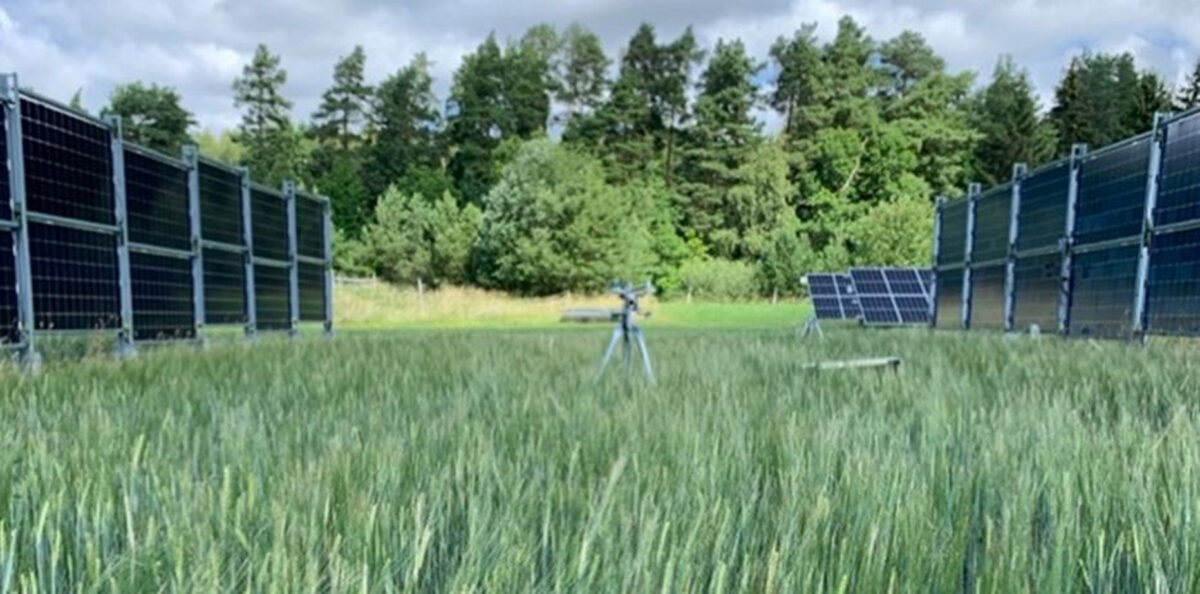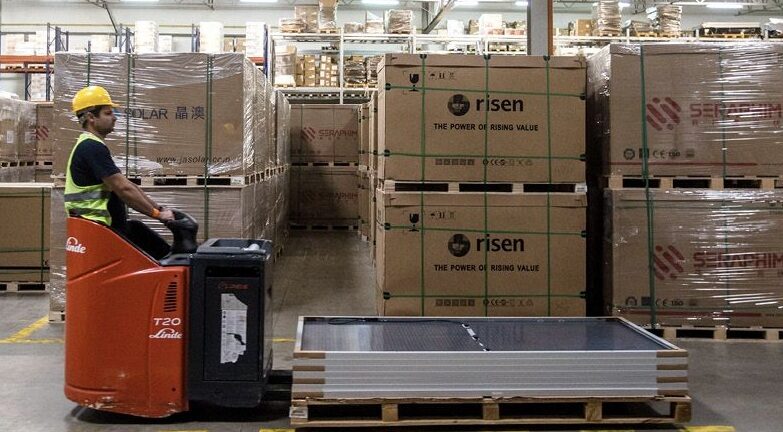Researchers at the Mälardalen University in Sweden have investigated the effects of a vertical agrivoltaic (APV) system on barley yield and nutrient content in Sweden during the 2023 growing season.
“The dataset shows that barley grown under the vertical APV system has comparable yields to open-field control conditions despite the increase in shading due to the vertical panels,” the research's lead author, Silvia Ma Lu, told pv magazine. “The dataset includes details on kernel and straw yields, protein content, and starch levels, along with weather and solar irradiance data from the growing season.”
“The 2023 summer was marked out by contrasting extremes with dry and hot weather in June, and heavy rainfall in July and August.” co-author, Pietro Campana, added. “More specifically, it was observed that the mean barley yield in all the different areas of the vertical agrivoltaic system was higher than the one in the control area, but not statistically significant.”
The scientists conducted their analysis at a vertical agrivoltaic facility located in Kärrbo Prästgård, near Västerås, Sweden. For their assessment of barley yield, they considered parameters such as nitrogen content, crude protein levels, kernel yield, straw yield, starch content in kernels, and thousand kernel weight (TKW). The results were compared to those of a reference plot without the PV systems.
The samples were hand-harvested five centimeters from the ground on September 7, 2023, with each sample corresponding to a square area of 0.25 m2. The fresh weight of the samples was measured immediately after cutting. Subsequently, the samples were dried at 60 C for 24 hours and weighed again to determine the dry matter (DM) content.
“The yield of kernel and straw was then calculated accordingly,” the researchers explained. “An approximation of the same amount of water content in the kernels and straws at cut was assumed.”
The group said that the proposed methodology can be replicated for other sites and crops.
Their findings were presented in the paper “Data on the effects of a vertical agrivoltaic system on crop yield and nutrient content of barley (Hordeum vulgare L.) in Sweden,” published in Data in Brief. “The findings support further APV system research, for instance, for crop model validation. They also encourage collaboration through the sharing of field experiment data,” Ma Lu stated.
Another research team at the Mälardalen University recently developed an algorithm to optimize electricity yield in agrivoltaic installations with vertically mounted bifacial PV modules.
Other researchers at the same university created a procedure for identifying and classifying suitable areas for the installation of agrivoltaic systems.
This content is protected by copyright and may not be reused. If you want to cooperate with us and would like to reuse some of our content, please contact: editors@pv-magazine.com.




By submitting this form you agree to pv magazine using your data for the purposes of publishing your comment.
Your personal data will only be disclosed or otherwise transmitted to third parties for the purposes of spam filtering or if this is necessary for technical maintenance of the website. Any other transfer to third parties will not take place unless this is justified on the basis of applicable data protection regulations or if pv magazine is legally obliged to do so.
You may revoke this consent at any time with effect for the future, in which case your personal data will be deleted immediately. Otherwise, your data will be deleted if pv magazine has processed your request or the purpose of data storage is fulfilled.
Further information on data privacy can be found in our Data Protection Policy.